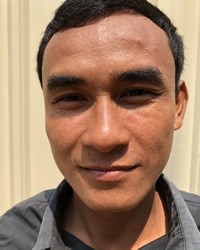Kui in Thailand

Photo Source:
Anonymous
|
Send Joshua Project a map of this people group.
|
| People Name: | Kui |
| Country: | Thailand |
| 10/40 Window: | Yes |
| Population: | 432,000 |
| World Population: | 521,000 |
| Primary Language: | Kuay |
| Primary Religion: | Buddhism |
| Christian Adherents: | 2.00 % |
| Evangelicals: | 0.41 % |
| Scripture: | New Testament |
| Ministry Resources: | Yes |
| Jesus Film: | Yes |
| Audio Recordings: | Yes |
| People Cluster: | Mon-Khmer |
| Affinity Bloc: | Southeast Asian Peoples |
| Progress Level: |
|
Introduction / History
Kui people are found in Thailand, Laos and Cambodia. They are also known as Kui and Kamen-boran(which means ancient Khmer). In Cambodia they live primarily in the north-central part of the country, in Preah Vihear and Kampong Thom provinces. Their villages are mostly in remote areas interspersed with Khmer villages. Early inhabitants of the area, the Kui did not have an advanced civilization or empire like the Khmers. In the past they had a reputation as iron ore smelters and blacksmiths, but those skills seem to have been lost.
In appearance they do not differ from the Khmers. They have their own language, unwritten until recently. One folk tale is that the village elders originally wrote their language on a pig skin but then dogs ate it so their writing was lost. Kui is in the Mon-Khmer language group and there are several dialects. Most Kui people also speak Khmer and in some places they are losing their own language.
What Are Their Lives Like?
The Kui are mostly poor wet rice farmers. Farming is labor intensive, plowing with cows or water buffalo and transporting goods by oxcart. They grow few other crops, though in some areas they grow cashews. They also raise chickens, pigs and cattle. Many also gather forest products like resin, wood and traditional medicines although this is changing due to rapid deforestation. Frequently their diet consists of rice eaten with salt and chili peppers. Kui villagers live in houses like those of their Khmer neighbors, bamboo and thatch on stilts.
Their fields are typically some distance away surrounding the village. Their dress is not different from that of the Khmer people. They typically wear Western type clothing, though women often wear a sarong. Both men and women use the Cambodian Krama (checked cotton piece of fabric) as scarves, head wear, belts, wraps for bathing and other uses.
The Kui have an oral culture, and few can read the local language. For most, education is only available for two or three years, but in Khmer, which contributes to their assimilation into Cambodian culture.
What Are Their Beliefs?
Their beliefs are a mixture of animist and Folk Buddhist ideas with animism being the older and more dominant belief structure. Buddhism is increasing in their areas as they assimilate more with the Khmer people. For example, one large village now has a very simple wooden Buddhist temple built less than 10 years ago. Many wear strings tied around the neck, waist or wrists to ward off evil spirits. They mostly rely on traditional healers in the case of illness.
What Are Their Needs?
The Kui are at the bottom of the economic heap in Cambodia. They are often looked down upon by Khmer people. The Kui have little access to good health care. They could really benefit from health and hygiene education, better access to clean water, and improved agricultural methods. Many have never heard of Jesus, and few have had the opportunity to hear the Gospel presented in a way that makes sense to them. Pray for committed Cambodians and other believers to bring the good news to these people.
Prayer Points
Pray for the Lord to thrust out loving workers to the Kui people in Thailand.
Pray for the Kui to have a hunger and thirst for truth and holiness that will lead them to the cross.
Pray for a movement that will lead their families to Christ throughout Southeast Asia.